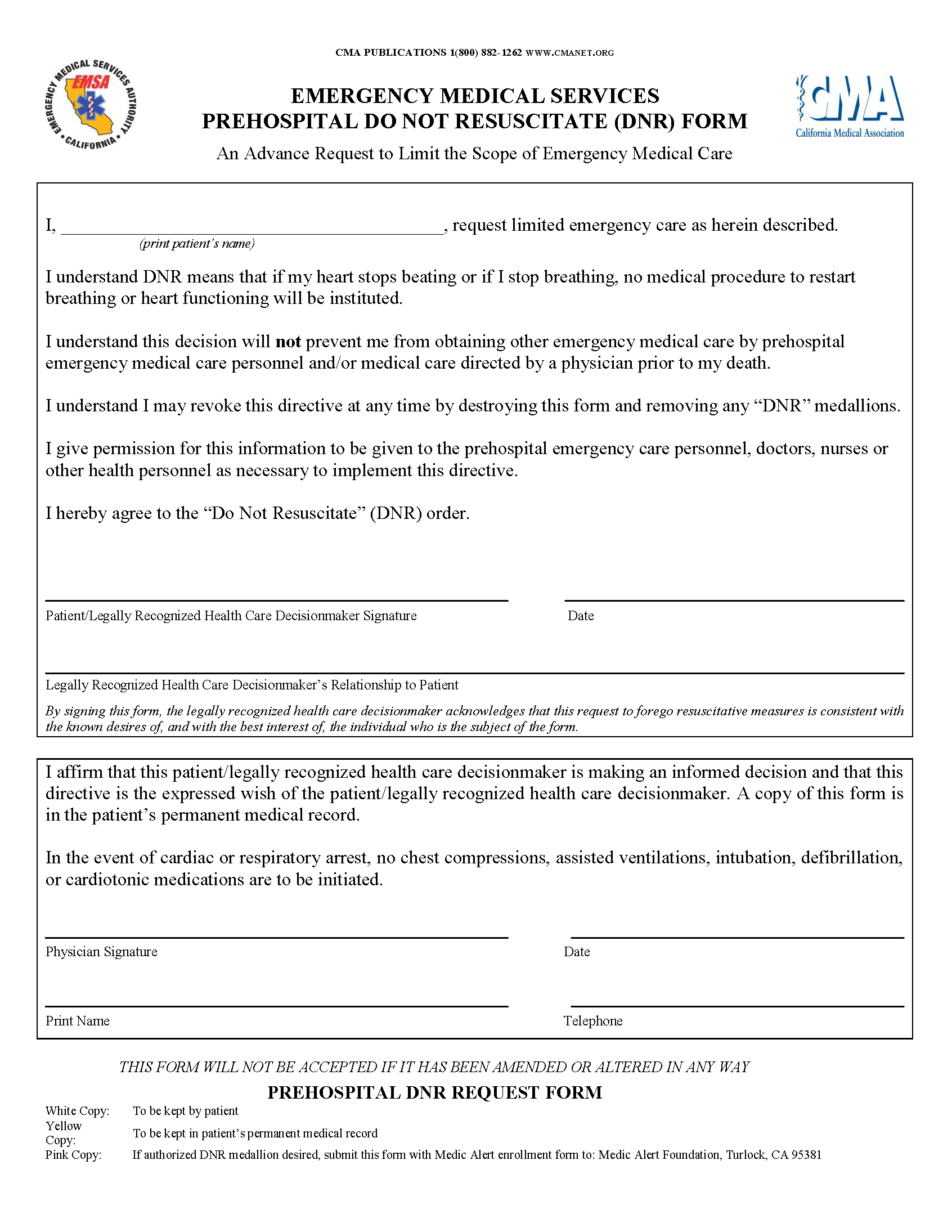Signing Requirements
A DNR form must be signed by the patient or a representative authorized to sign on their behalf and the patient’s physician.[1]
Hospital vs. Prehospital DNRs
The do not resuscitate form provided is called a Prehospital DNR, meaning emergency services will comply with the order anywhere outside of a hospital (e.g., at home, in a long-term care facility).
If a patient is admitted to a hospital, the medical staff should honor a completed prehospital DNR. However, many healthcare facilities have their own policies and forms, so patients are encouraged to complete the healthcare facility’s DNR form upon admission.

